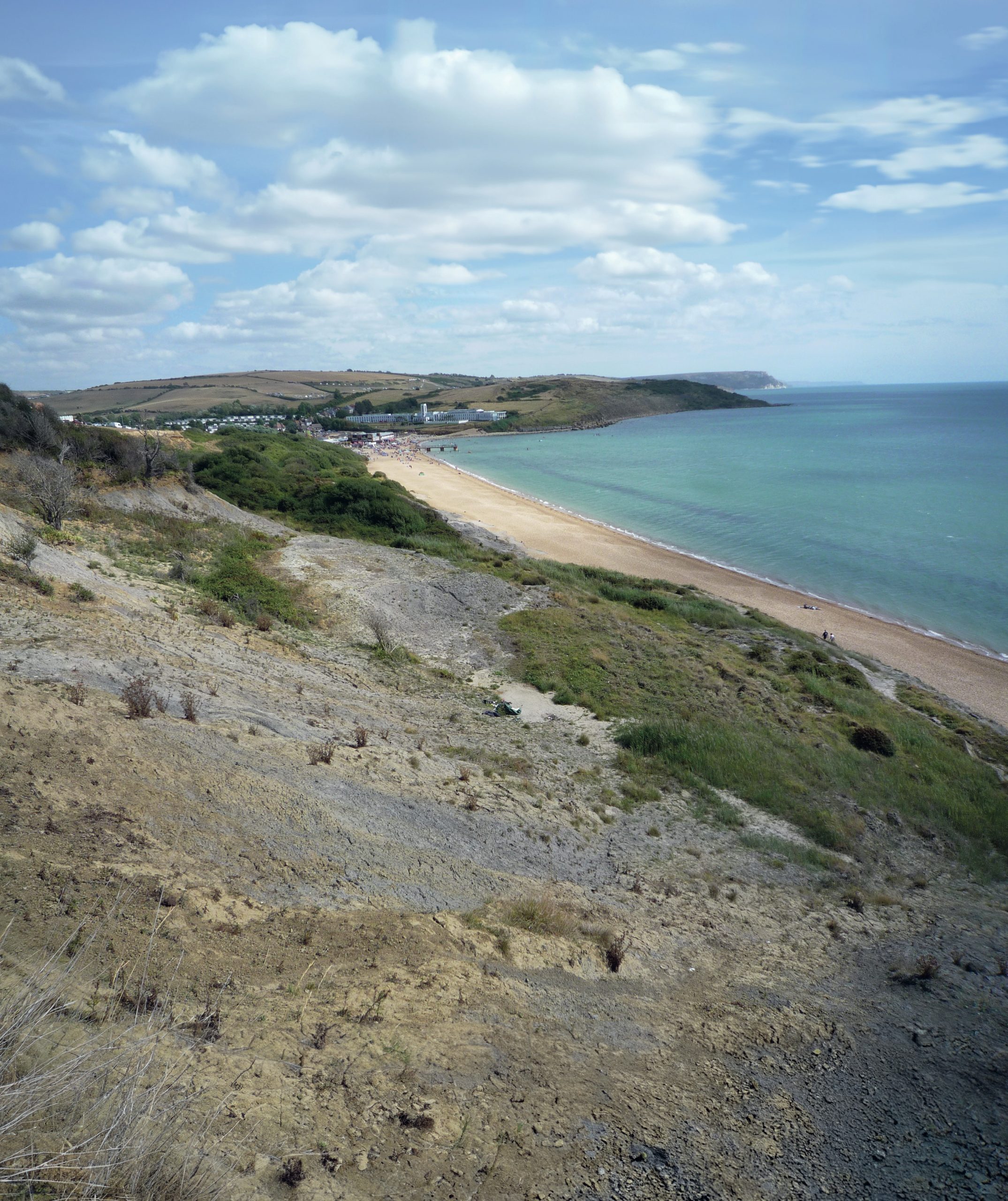
The Jurassic Coast World Heritage Site stretches for more than 150 kilometres along the coastlines of Devon and Dorset. This coastline combines internationally important geological exposures with a range of wildlife habitats, which are home to rare plants and animals. Coastal erosion is active in many locations — especially where unconsolidated deposits are prone to mass movements — and poses a key management challenge. Hard civil engineering to prevent shoreline retreat is particularly associated with the gateway towns of Weymouth and Lyme Regis.
The photograph above shows the badly degraded Furzy Cliff to the east of Weymouth in Dorset looking towards Bowleaze Cove and the distinctive Riviera Hotel. Furzy Cliff was once the most fossil-rich part of the Oxford Clay Formation and one of the best locations in the UK for vertebrate fossils. Good quality exposures are now rare because the slopes are heavily degraded by slumping in the clay-rich sediments.
Your organisation does not have access to this article.
Sign up today to give your students the edge they need to achieve their best grades with subject expertise
Subscribe



